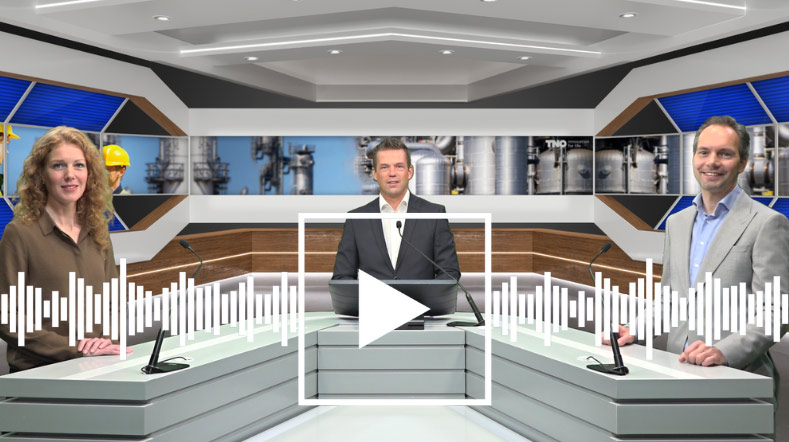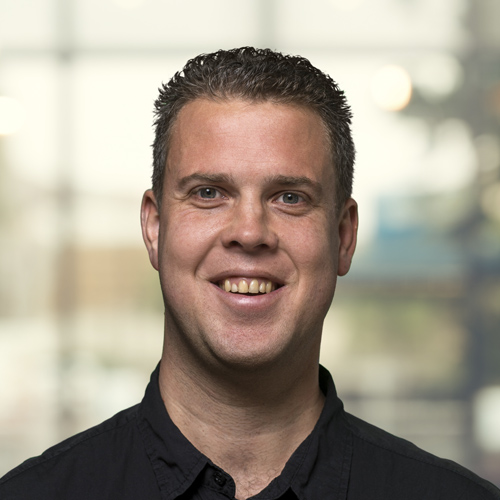Stress and sensing
Stress and burnout complaints in the workplace are on the increase. At TNO, we do a great deal of research on the sustainable employability of staff at various organisations. We tackle the psychosocial workload with tools, innovations, and methods.
Sustainable employability
Work-related stress is a serious threat to sustainable employability. Prolonged stress can lead to overload, a lack of productivity, absenteeism, and burnout. Stress affects people’s well-being, causing high costs for employers and society. We help employers and employees combat work-related stress through technological and social innovations.
It’s important for the health and vitality of the workforce that employees themselves manage their workload. Our innovations let them take control. In addition, we develop tools for employers to reduce the mental load on employees. We connect technological solutions, such as applied gaming, with social solutions.
TNO Workload Guide
Our Workload Guide clarifies how to ease workloads. We developed the Workload Guide together with social partners, on the basis of practice and science. The Guide leads the employer or employee in a structured way through an effective approach to ease work pressure for every organisation.
Our other solutions and innovations
Work pressure and technostress in the workplace are inextricably linked. In the brochure ‘Technostress extends beyond technology’, we describe technostress, highlight its underlying causes, and point the way to solutions.
Measure your own work stress as an employee, so that you can intervene in time if you experience overload. That’s the aim of the Stresscoach. From simple questionnaires to measuring stress hormones and heart rate. In the future, the Stresscoach will enable employees to gain direct insight into their stress levels during the working day.
Another intervention we’ve developed is healthy scheduling. In this way, we help employees organise their day better and assist employers in drawing up smart schedules.
Integrated approach to psychosocial workload
For years, psychosocial workload has been increasing among workers. This manifests itself in increasing work stress and burnout complaints, among other symptoms. The result is reduced employability and rising absenteeism costs. We work with multidisciplinary teams, for example in healthcare, education, industry, transport, public services, police, and the military, to study, analyse, and tackle psychosocial workload.
Excessive or prolonged stress is a complex problem. A sound problem analysis of psychosocial workload is essential for arriving at an effective approach. This requires research by various disciplines. At TNO, all relevant areas of expertise work together to detect and reduce work-related stress. We do this on a scientific basis, combined with years of experience in, and knowledge of, organisations in various sectors.
Research into the source
We always first investigate the source of the psychosocial workload. It often involves a combination of factors that together cause the stress. These factors may or may not be work-related.
Resilience and stress level
A second subject of research is resilience. How good are the employees, the teams, or the organisation as a whole at handling stressful situations? To what extent are resources available? And third, research into stress levels is important. How high has the stress risen? How do people react to stress? How is it experienced?
The individual
When studying work stress in a particular setting, we work at different levels. In individuals, we look at the physiological and psychological aspects. This may concern acute as well as chronic stress, and risks of post-traumatic stress. Every professional group has its own characteristics that can have an effect on individuals.
From team to organisation to society
At team or organisational level, stress often involves work pressure, work processes, the degree of employee autonomy, leadership, culture, or broader organisational structures or processes. We also examine the context of an organisation or sector. Which social factors exacerbate or – conversely – alleviate psychosocial workload? One example is the sensitivity of the public sector to measures imposed by the government.
Work-related stress can be measured from many perspectives. The degree of stress, its causes, and its short and long-term consequences, at the level of the individual, team, organisation, or society. These data can be measured and analysed in many ways. We perform analyses in a reliable and scientifically sound manner.
This means, for example, that the measuring tools that our teams use (and partly develop themselves) actually measure what they’re supposed to. Knowledge about the application and validity of tools and instruments ensures that we also know which measurement method provides the most reliable and accurate information. Our knowledge of innovative analysis techniques and data science means that analyses are conducted from various perspectives. Finally, knowledge about the various sectors of society and about organisational processes enables us to understand, explain, and interpret the results of analyses within their context.
Collecting data
The stress that people suffer can, for example, be measured subjectively on an individual level with validated questionnaires or interviews. But you can also determine stress objectively through measurements involving blood, saliva, and hair. Technological developments, such as smartphone apps, electronic diary technology, and sensors, make it possible to collect increasingly precise and rich data. This is providing us with ever more data to work on. Advanced methods, such as multi-level analysis, enable us to link and analyse the data at different levels.
Multi-year measurements
We have a number of studies underway in which we follow large groups of employees over an extended period. By measuring regularly and consistently, we study relationships between causes and effects of work-related stress. Analyses of these data form the basis for many policy recommendations. The data also form a benchmark for research carried out in sectors or companies. Substantial data and results from such studies can be found at www.monitorarbeid.nl, where you’ll also find a variety of data on industries and occupational groups.
There are 2 basic strategies, which can be used alone or in combination, for actually reducing work-related stress. The first is a source-based approach that eliminates the cause of the stress or ensures that it causes less damage. The second is a resilience-based approach in which we help employees cope better with stress.
Source-based approach
The great advantage of a source-based approach is that every employee who’s exposed to a specific risk will benefit if this risk is eliminated or reduced. It therefore helps not only employees who already have a lot of stress, but also those who are not – or not yet – experiencing stress. A source-based approach is preventive.
The organisation takes steps, for example, to organise work processes differently or to let employees have more agency in organising and regulating their work. Such measures are only successful if they’re appropriate to the organisation and are directly aimed at the specific problem that emerged from previous analyses.
Implementing a source-based approach is not easy. It often entails organisational changes that require support from both employees and managers. This means that we work together closely with employees from all parts of the organisation. They know how things are, why they are that way, and what’s needed to bring about change. We know a lot about factors that make this implementation process successful or, on the contrary, that hinder it.
Resilience-based approach
Sometimes, it isn’t possible to remove stress triggers completely. What’s more, stress is an intrinsic part of work in some occupations, such as in the police, the military, the fire service, emergency services, etc. In this case, a resilience-based approach is the obvious choice, in which employees learn how to manage stress effectively. Training prevents people from making unnecessary mistakes due to stress. In addition, training ensures that the right resource is called upon at the right time and that the psychological consequences of stressful or traumatic events are less severe for employees.
For example, long-term research we’re carrying out together with the Ministry of Defence is making it increasingly clear which resources for resilience are important at which stage of a career. Among other things, this has resulted in a model to support to the mental resilience of military personnel in the best way possible. And it has produced an instrument with which the Ministry of Defence can measure the factors that influence this resilience.
Want to know more?
Downloads
- White paper ‘Reducing work-related stress with an integrated, tailor-made approach’ (pdf) (pdf)
- Community Well-being - 2020/21 programme (pdf) (pdf)
- Jointly increasing health and well-being of employees over the long term (2021) (pdf) (pdf)
- E-brochure ‘Innovations for future-proof work’ (pdf) (pdf)
Read more
Get inspired
TNO Announces the launch of ObjectivEye


Prospective Life Cycle Assessments for future-proof product design


Knowledge advantage in SSbD offers opportunities for Dutch chemical companies


The future of chemicals is Safe and Sustainable by Design


SSbD presents significant opportunities for the Dutch chemical sector to maintain its leadership position












